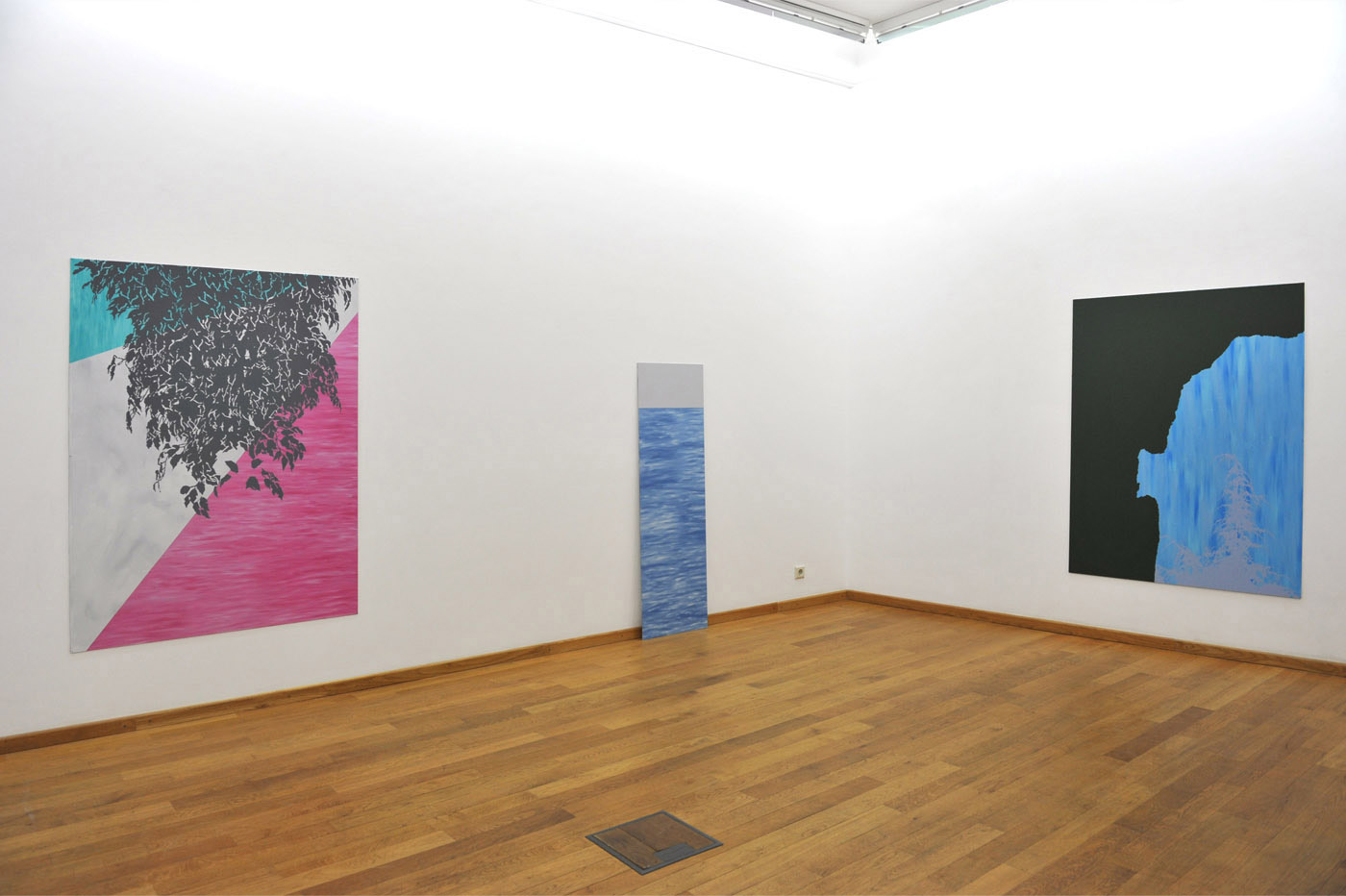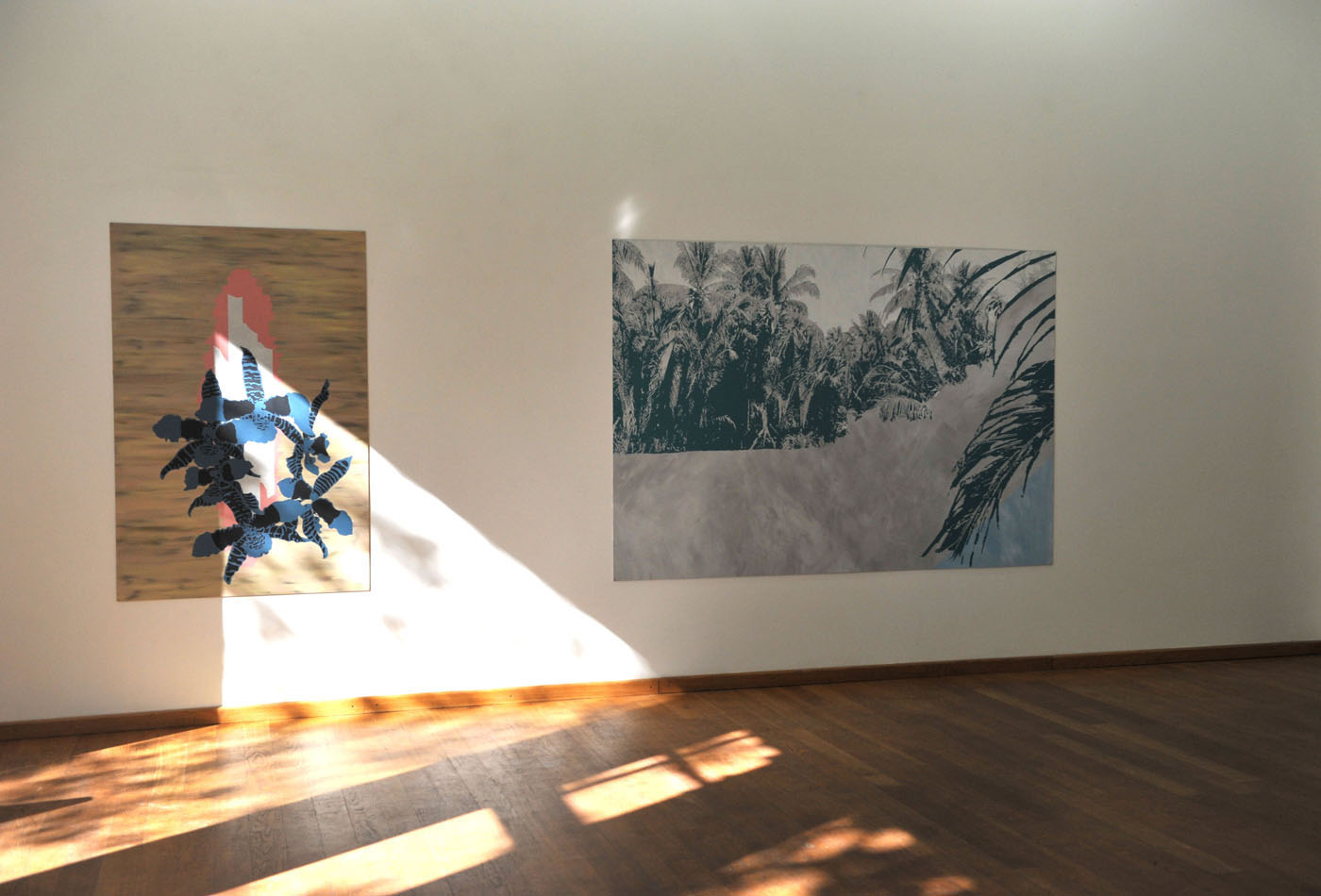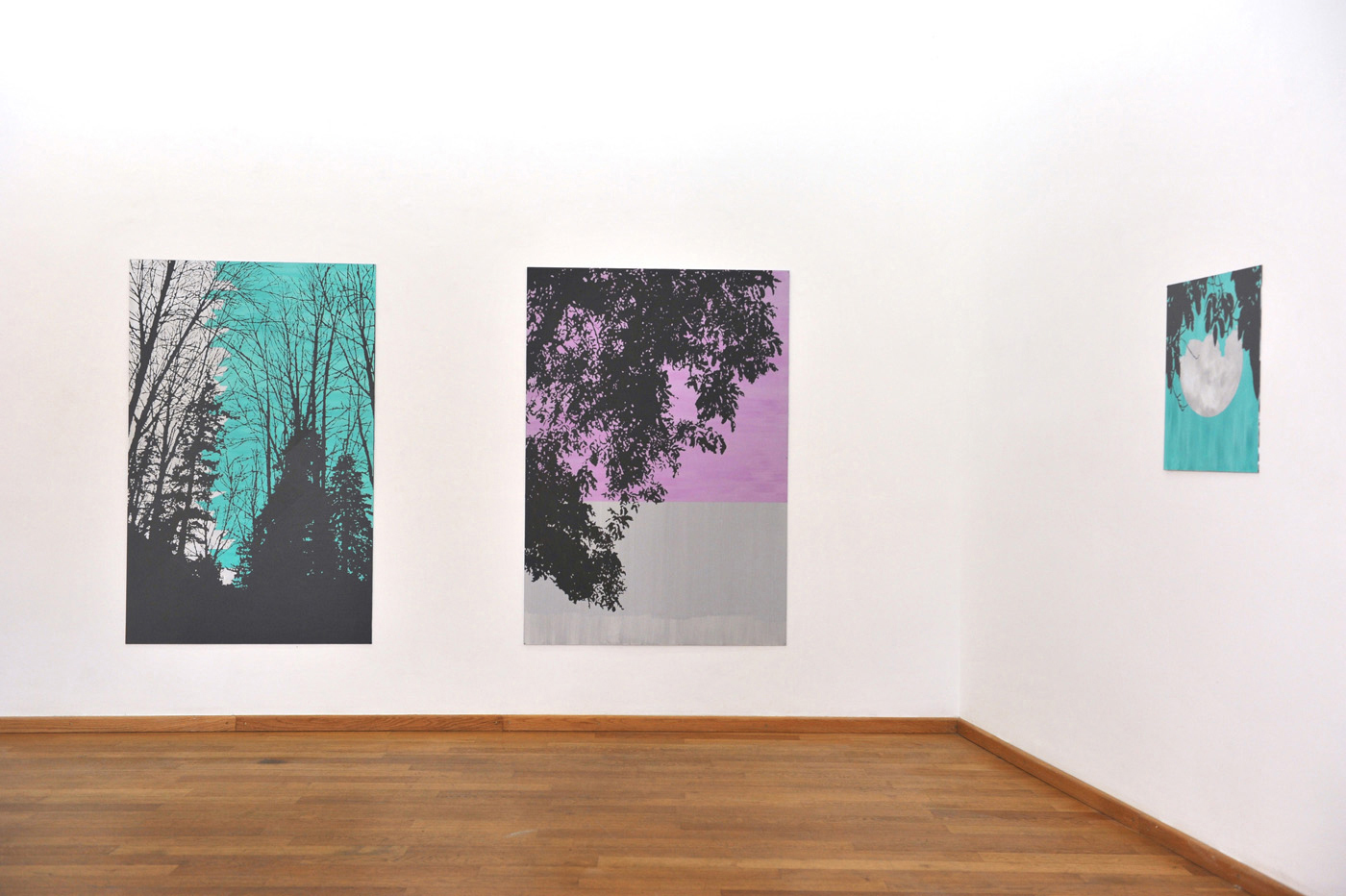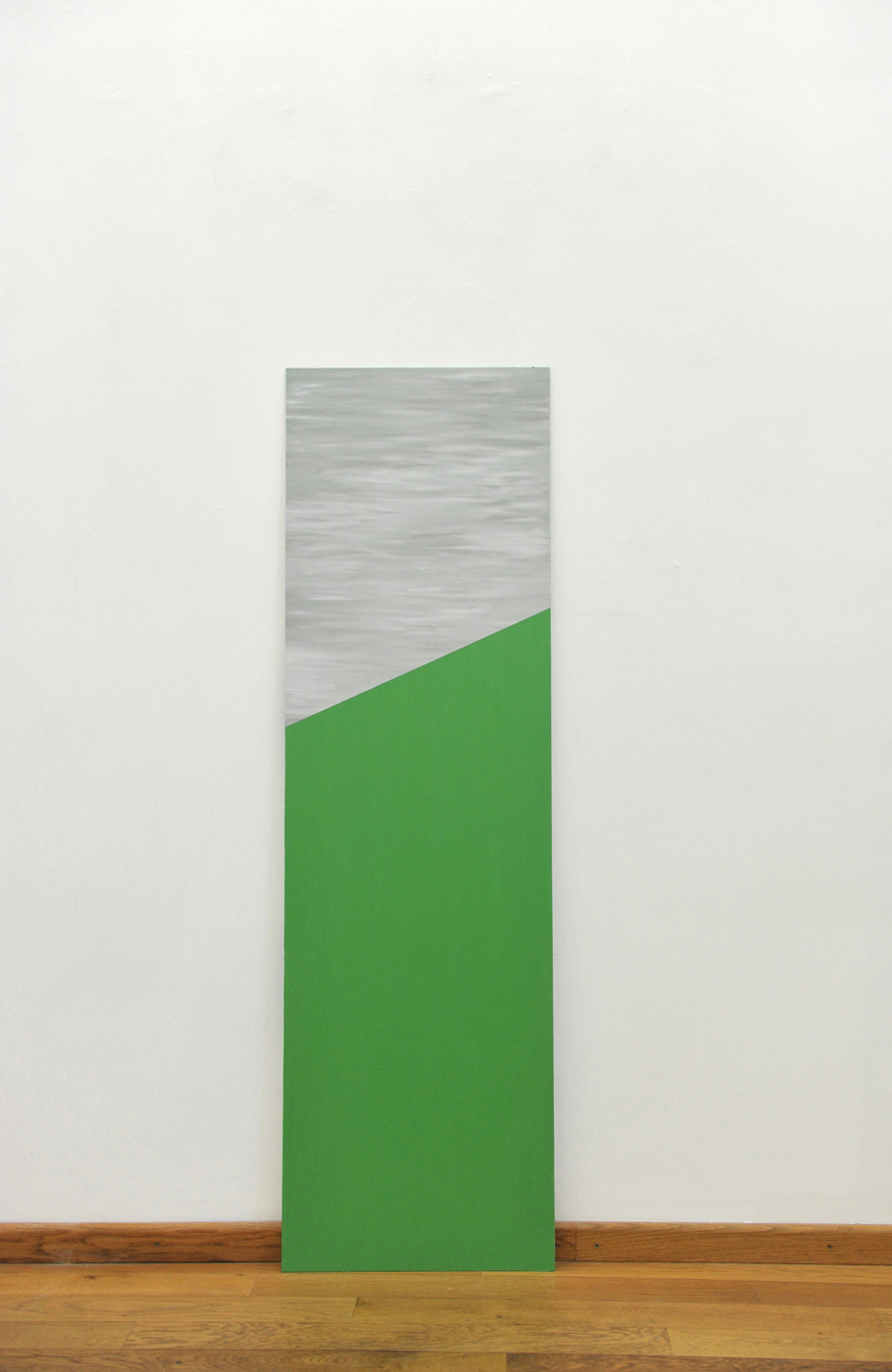Grégory Durviaux Le souvenir d'un rayonnement et la prémonition d'une ruine
05.9.2013 - 21.9.2013
Informations
The paintings that Grégory Durviaux (born 1975 in Brussels, lives and works in Brussels) made for his first solo show at Nosbaum&Reding indicate a new and important evolution is his artistic work. Still working with various paints on aluminium he has broadened his horizon, opened up his work to new experiences and realised a more complex and interesting set of paintings.
While the former works leaned high on a sentimental, melancholic and romantic atmosphere and were culled from photographic and cinematographic images that seemed to belong to our collective memory (1), the new paintings come from more diverse sources and do not rely so much on found imagery anymore. Internet has erased the idea of collective memory and replaced it by a global database where almost everything can be found. What once had to linger in our minds and was hardly to be verified can now be checked with a few clicks.
Even when the artist still uses imagery found on the web, more than anything the recent paintings are rather based on what the artist remembers himself: books, music, personal situations... Today it is his personal recollections, not are common ones that we are confronted with.
In the earlier works the paintings seemed to be having painted foremost for the viewer, opening a drawer full of images for us to delve into. The paintings were made up of projected images onto the canvas and then filled in with paint leaving the viewer a screen to project his own history onto.
Today the distance between the artist and the canvas he works on has narrowed and the painting has become a more intimate affair. Each painting is first of all painted for the artist himself.
The projection has since several years been replaced by the meticulous act of the pouncing pattern. This ancient technique is the careful treatment of a depiction by painstakingly copying an image laying semi-transparent paper over the original image, then tracing along the lines of the image by creating pricked marks on the top sheet of paper. This pounced drawing made of pricked holes is laid over a new working surface.
This technique forces the artist to be closer with what he depicts . He is less occupied with the painted image but with the image painted. “When all these elements: form, image, colour, division of space, fore- and background are brought together by the link of paint, the painting starts to exist” (2).
This is what happens here. Sometimes a tsunami of paint seems to have sucked up the figuration image in the painting (Robert Janitz, 2012-2013), elsewhere the image looks as if dried out by the paint applied to the canvas. In some paintings abstraction and figuration are in perfect harmony (Pasolini, 2013), as if Ellsworth Kelly and Ed Ruscha sat down and decided to make a painting together, other works are relying on the tensions created by divisions of space through the paint applied (Ravel, 2013) . Fluid passages of paint are combined with graphical parts and abstract layers partly build up a figurative image. Various works lean on the continuous shift of fore- and background demanding a repeated look. All these elements from this new complexity make each view of Grégory Durviaux recent paintings into a new and uplifting experience.
Philippe Braem
1. But our déjà vu betrayed us. The depictions could not have been the images we thought we had seen – most of the images came from set photographs, the nearly true images from movies.
2. Luc Tuymans said this regarding the work of Giorgio Morandi but it of course applies to painting in general.



